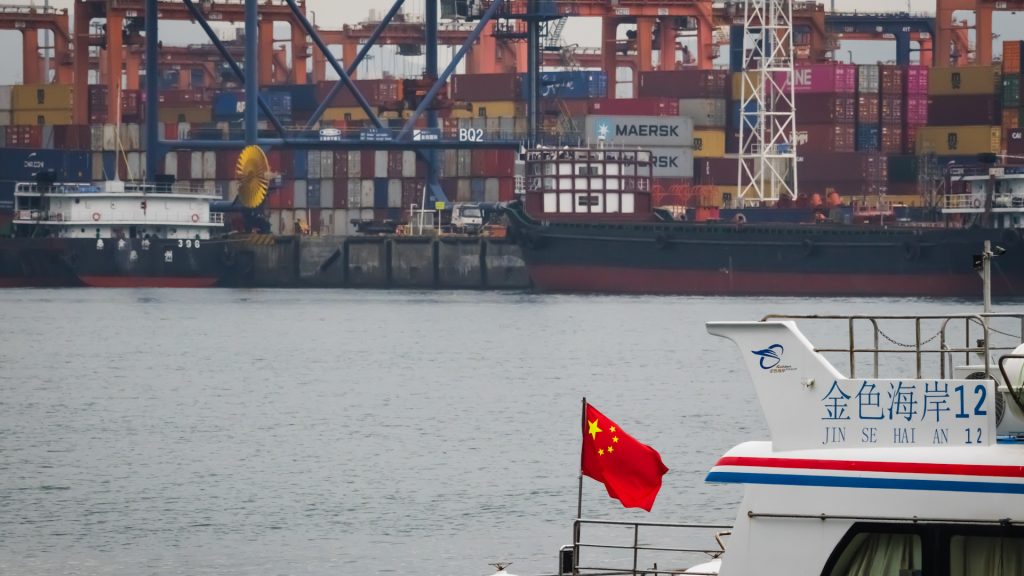China rolls back 125% tariffs on semiconductors: Report
Ella Greene April 25, 2025 0
China has quietly rolled back steep tariffs on some U.S.-made semiconductors, according to import agencies in Shenzhen. Beijing lifted the 125% duties on eight types of integrated circuits — excluding memory chips — as it tries to ease pressure on its tech sector during a prolonged trade dispute with the U.S.
Customs officials discovered the exemptions during routine procedures, even though China did not publicly announce them. Industry insiders said they are now spreading quickly through supply chain networks.
International logistics firm Shenzhen HJET Supply Chain reportedly posted on the Chinese social media platform WeChat: “Good news! Good news! Great news! We have received the latest notice from China Customs that the following 8 tariff codes related to semiconductors/integrated circuits are exempt from tariffs imposed on the United States.” The company said the tariffs on U.S.-origin chips had been reduced to zero.
Straight Arrow News could not independently verify the post.
Why did China make this move?
While China has made progress building up its domestic chip industry, it still relies heavily on imported semiconductors from the U.S., South Korea, Japan, Taiwan and the Netherlands. Last year, China imported nearly $12 billion worth of U.S. semiconductors, according to Chinese customs data reported by CNN.
By dropping tariffs on key chip types, Chinese officials appear to be protecting industries that depend on foreign components, especially in areas where China has limited alternatives.
Which companies benefit from the exemptions?
The policy shift is expected to benefit U.S. firms such as Intel, Texas Instruments and Global Foundries, which all export chips to China. Officials also confirmed that China is removing tariffs on some U.S. aircraft parts, including engines and landing gear.
Reuters reported that the aviation supplier Safran said Chinese authorities recently told the company that its products would no longer face additional duties. China’s broader aim, according to importers, appears to be shielding industries tied to high-tech manufacturing and aviation.
What is the US saying about the trade dispute?
President Donald Trump said this week, according to multiple reports, that tariffs on Chinese imports — currently set at 145% — “won’t be that high” for long, hinting at a potential reduction. Treasury Secretary Scott Bessent added that the current tariff structure is not sustainable and said there’s an opportunity for a broader trade agreement if China is willing to engage.
Still, no formal negotiations have occurred, according to the Washington Post. Chinese officials quickly denied holding any meetings after Trump claimed Thursday, April 24, that discussions had taken place. “There have been no consultations or negotiations,” a spokesperson for China’s Foreign Ministry said, calling Trump’s statement “fake news.”
Is the trade war easing or escalating?
The situation remains uncertain. Trump has floated the idea of dialing down tariffs while keeping pressure on China. Beijing has pushed back, insisting that the U.S. remove all tariffs as a precondition for talks.
At the same time, China has introduced limited exemptions that indicate an effort to reduce economic strain while maintaining a firm stance publicly. The rollback on chips and aircraft parts could be an early signal that China is open to targeted cooperation, especially where it lacks domestic capacity.
What’s next?
Despite conflicting signals, both sides are under pressure to de-escalate. U.S. officials have warned that the current tariff rates could strain global markets, and analysts said China likely sees an advantage in waiting for further U.S. concessions.
Whether this week’s developments lead to formal talks remains unclear. For now, both countries continue to maneuver around each other while trade tensions linger.
Ella Rae Greene, Editor In Chief
Ella Greene
Ella and the staff at Clear Media Project (CMP) curate these articles.
Unless otherwise noted CMP does not write these articles.
The views, thoughts, and opinions expressed in the articles published on this blog belong solely to the original authors and do not necessarily reflect the views of the blog owner. The blog owner does not claim ownership of the content shared by contributors and is not responsible for any inaccuracies, errors, or omissions.
All rights and credits goes to its rightful owners. No Copyright Infringement is intended. If you believe any content infringes on your rights, please contact us for review and potential removal.





